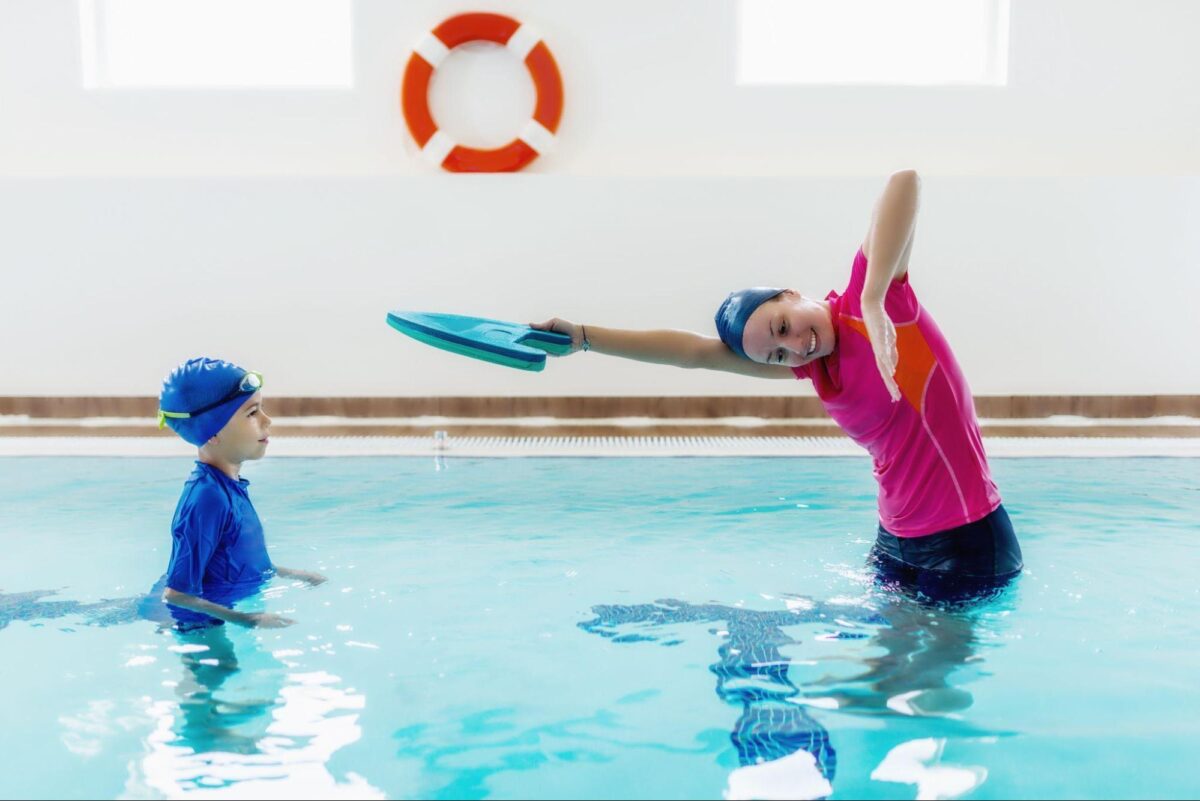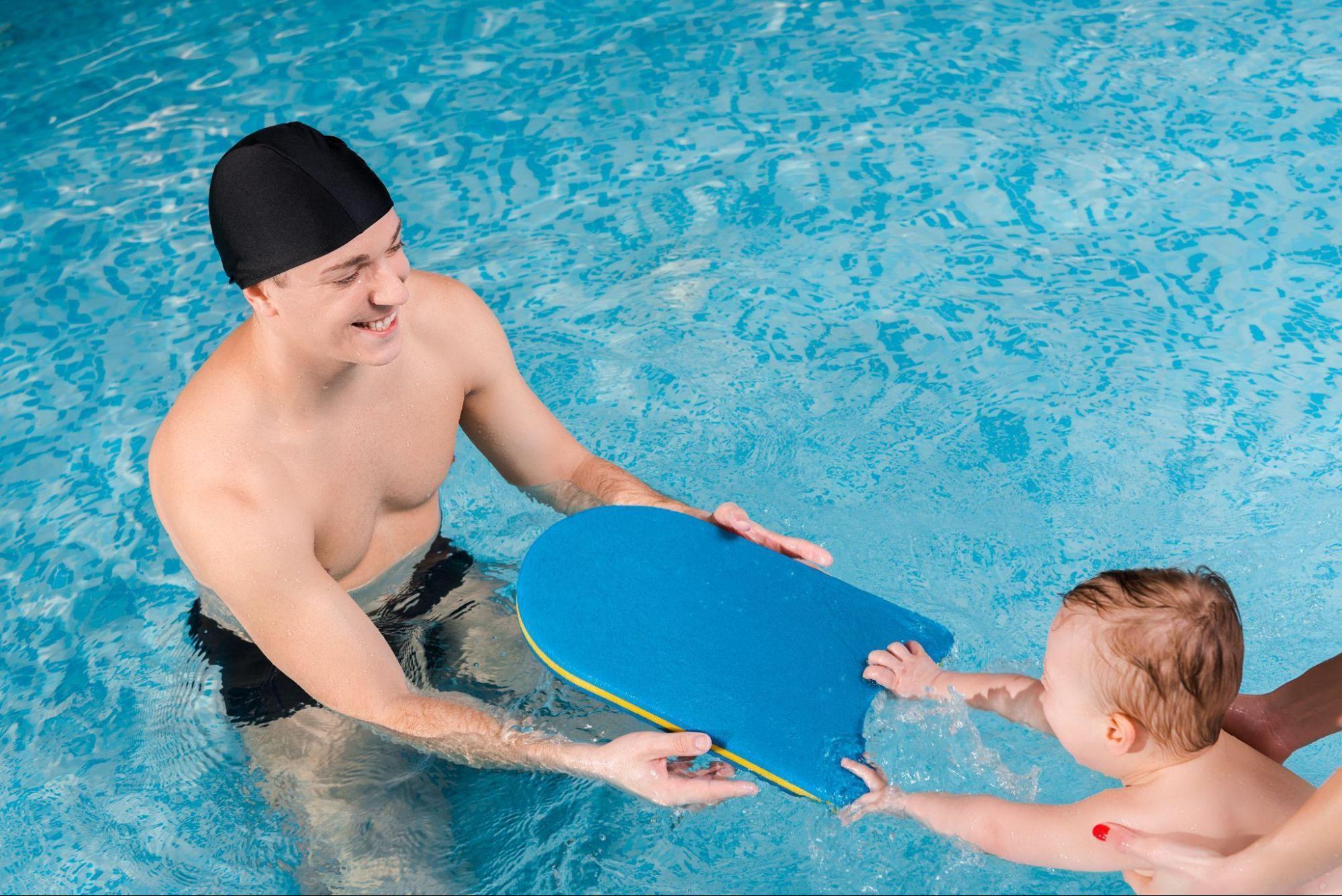6 Basic Swimming Skills Everyone Should Learn

by Coach Mark
Beyond being a fun way to stay active, swimming plays a critical role in personal safety. Knowing how to swim can prevent drowning, boost overall fitness, and open the door to a variety of water-based activities with confidence. Even if you don’t aspire to become a competitive or full-time swimmer, having a grasp of basic swimming skills can make all the difference in emergencies or recreational settings.
1. Getting In and Out of the Water
Learning how to enter and exit the water safely might seem effortless, but it’s a vital swimming skill for both children and adults. In emergencies, knowing how to get in or out of the water quickly and safely can make all the difference.
One of the most common and beginner-friendly methods to ensure safe entry into water is the sit-and-slide approach. You must sit on the edge of the pool and gently lower yourself into it. This reduces the shock of sudden immersion and helps prevent slipping.
One of the most common and beginner-friendly methods for safe water entry is the sit-and-slide approach, performed with your back facing the pool. Sit down on the edge, turn so your back is toward the water, and slowly lower yourself in by sliding down with control. This technique reduces the shock of sudden immersion and minimizes the risk of slipping.
For pools with built-in steps or ladders, learning how to step in with control and exit confidently by pulling yourself up is equally vital. These techniques promote independence and help swimmers feel secure from the very beginning.
For pools with built-in steps or ladders, learning to step in with control and exit confidently by pulling yourself up is equally vital. In pools without ladders, young swimmers can use the “elbow, elbow, tummy, knee” method—placing both elbows on the edge, sliding the tummy up, and bringing one knee onto the ledge to climb out. These techniques promote independence and help swimmers feel secure from the very beginning.
2. Breathing Techniques
Breathing might be second nature on land, but in swimming, it becomes a vital skill that requires conscious control and coordination. Proper breathing techniques are crucial for reducing anxiety, maintaining a steady rhythm, and conserving energy.
Beginners should start by practicing breath management, such as inhaling through the mouth above water and exhaling through the nose or mouth underwater. This practice can be done while standing in shallow water, holding the wall in the pool or using a kickboard for support.
As swimmers become more comfortable, they can begin timing their breaths with their strokes, especially during the front crawl. Controlled breathing builds stamina and makes swimming feel more natural and less tiring.
⚠️ Important Safety Note:
Breath-holding games or extended breath control exercises should never be done unsupervised. These activities can be dangerous and must only be attempted under the guidance of a qualified instructor who understands the safety protocols involved. Holding the breath for too long—especially in a playful or competitive context—can lead to shallow water blackout and serious injury. Always prioritise safety over challenge.
3. Floating
Floating is a basic survival skill in water. Learning how to float on your back allows swimmers to rest when tired, conserve energy, and stay safe if they ever find themselves in trouble in deep water. It’s also one of the first swimming skills taught to beginners to build water confidence.
To float, the swimmer should lie back with their arms and legs extended (bending legs at the knees also helps for some individuals), keep their lungs filled with air, and relax their body. With practice, both children and adults can master the art of staying buoyant, which is especially useful while waiting for assistance or transitioning between strokes.
4. Kicking Technique
Kicking is one of the basic swimming skills that provides propulsion in the water. A strong and consistent kicking technique helps keep the body afloat and propels swimmers forward. It also contributes to balance and body position in the water.
One of the best ways to develop a good kicking technique is by using a kickboard, which allows swimmers to concentrate on leg movements without worrying about arm coordination. Beginners can also hold onto the side of the pool and practice flutter kicks, ensuring their legs stay straight with relaxed ankles. Emphasizing small, quick, and continuous kicks helps prevent drag and maximizes efficiency. Over time, this strengthens the leg muscles, improving swimming speed and stability.
5. Coordination of Limbs
Swimming is a full-body activity that demands smooth coordination between the arms, legs, and core. Without proper coordination, a swimmer’s movements can become inefficient and tiring. This skill develops gradually and is vital for executing strokes properly and moving through the water with ease.
Beginners should focus on practicing simple arm and leg movements separately, then gradually work on synchronizing them. For example, during freestyle, arms alternate while the legs perform a flutter kick. Tools like kickboards or pool noodles are essential swimming equipment for kids and beginner adults, helping them isolate specific movements and improve their form.
6. Basic Strokes
Once you’re comfortable in the water, the next step is to learn basic swimming strokes.
- The front crawl (often misintepreted as the freestyle) is often the first swimming skill taught to beginners due to its simplicity and efficiency. It involves alternating arm movements, flutter kicks, and rhythmic breathing. The key is to maintain a streamlined body position and coordinate your breathing with your strokes to avoid fatigue.
- Alongside frontcrawl, swimmers should be introduced to strokes such as the sidestroke, known for its energy conservation; the backstroke, which helps develop spatial awareness in the water; and the breaststroke or butterfly, as swimmers gain more confidence.
Each stroke serves a different purpose and enhances a swimmer’s ability to move safely and effectively through water in various scenarios.
Master the Basics of Swimming with Marsden Swim School

Mastering basic swimming skills is the first step toward becoming a confident and capable swimmer. For those seeking to develop these skills in a structured and supportive environment, we offer swimming classes for kids and adults, tailored to all ages and ability levels. With flexible class options, including weekday sessions up to 5 days a week, weekend classes, and private lessons for personalized attention, you can learn at your own pace and schedule.
Start your journey today by enrolling in our swimming classes in Singapore and building lifelong water confidence.

